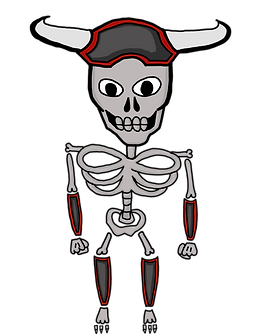
Dungeon Explorer 3D
Platform:
Oculus Rift
Tools Used:
Unity, Maya and Photoshop
Role:
Game Designer + Developer

A poster I created digitally showcasing the entrances to various dungeons in the game.

One of the doors in the game.

The wind entrance to the elemental dungeon.

A poster I created digitally showcasing the entrances to various dungeons in the game.
Overview
Dungeon Explorer 3D is a 3D Oculus Rift Virtual Reality video game designed for NJIT's Vision and Neural Engineering Laboratory. It gamifies the principles used in therapy for convergence insufficiency. In the game, enemies approach the player and the player must focus their gaze on the targets ("converge" on them) and after a specified amount of time an arrow is fired at the enemy. Since the therepeutic objectives limited the nature of the gameplay, I strove to keep players engaged by designing the game around a compelling storyline, including various enemies, and adding many dungeons for the player to explore.
Gameplay Video
Concept Art











3D Game Assets
All models shown in Sketchfab are game-ready assets.
Click play and then use the following controls to view the models:
Orbit: 1 finger drag or Left Mouse Button
Pan: 2-finger drag or Right Mouse Button or SHIFT+ Left Mouse Button
Zoom on object: Double-tap or Double-click on object
Zoom out: Double-tap or Double-click on background
Zoom: Pinch in/out or Mousewheel or CTRL + Left Mouse Button
Elemental Dungeon Exterior
Dungeon 1 Item Shop
Lava Golem
Earth Golem
Lightning Golem
Ice Golem
Wind Golem
Detailed Info
Convergence insufficiency is an eye disorder that affects one in twenty people. It affects fifty percent of patients that suffer from traumatic brain injury. The symptoms of this disorder include the inability to do near work for any length of time (reading, writing, or any other activity that requires close up vision). In as little as five minutes, a person with this disorder engaging in one of these activities will see words jumping off of the page and have blurry/double vision of whatever they are focusing on.
Current therapy for convergence insufficiency is effective but boring and therefore lacks patient compliance. In the case of young children and teens, this vision problem can greatly inhibit school-related tasks like reading and writing, which can significantly impact the education of children and teens in a negative way.
These VR vision therapy games that I designed are meant to gamify the therapy and make it fun and engaging for patients. The core movement of the therapy is the eyes crunching inward as they maintain focus on an object coming straight towards the patient. That is the reason that each of these games follows a similar structure, as it has to follow the parameters set by vision scientists and other researchers to ensure that it is therapeutically effective in treating this disorder.
The fuzzy lines seen in the game are Gabor patches, which force the patient to work their eye muscles and prevent involuntary "cheating" by the lenses of their eyes automatically changing size to produce the same convergence movement. Essentially, there are two Gabor patches that the player must line up to destroy the enemy. One of these patches is where there eye position is (in the case of my web game versions of these projects, this patch is tied to the xy position of the mouse). The other patch is on the enemy object. When the player lines these two patches up for a certain amount of time, the enemy is destroyed.

Gabor patch